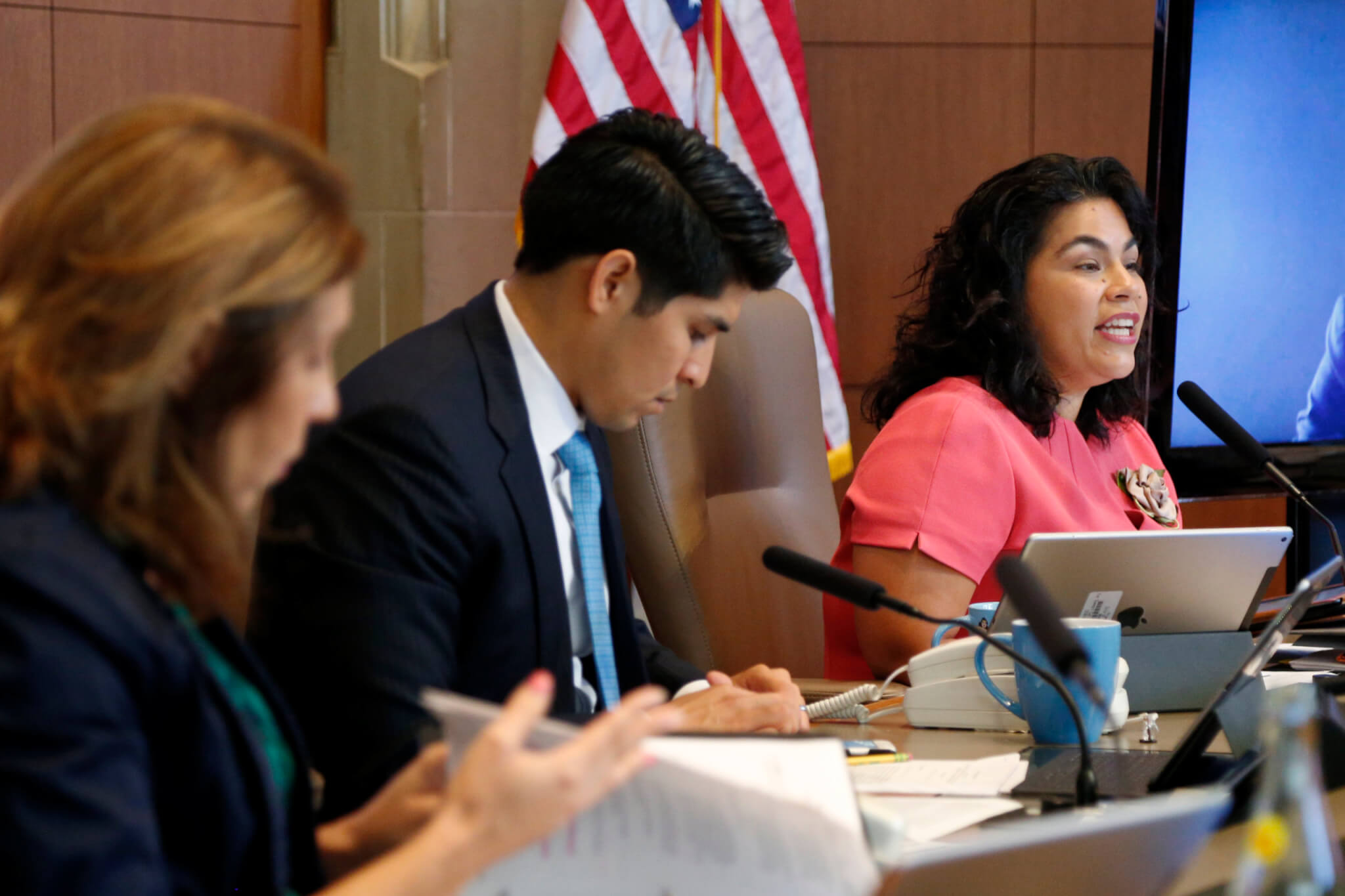
The city’s 2018 budget aims to address historic inequities.
Capping five weeks of discussion centered around equity and how it applies to city services, the City Council on Thursday approved the FY 2018, $2.7 billion budget.
Backed by Mayor Ron Nirenberg and most of the council members, the strategy was to provide more services to underserved districts while maintaining funding to other districts.
Back in early August, at the beginning of the weeks-long dialogue, council members were given a bit of a history lesson on how San Antonio came to be one of the most economically segregated cities in the United States. A presentation by Trinity University professor of sociology Dr. Christine Drennon argued that a great deal of the disparity could be attributed to the redlining policies of the Federal Housing Administration from 1934 to 1968. That history explains why there was a gap in prosperity between communities like the near West Side and others located mostly on the north side.
The council was then presented with a budget that was crafted through an “equity lens” as an attempt to right the wrongs.
“This budget puts a down payment on generations of disparities and inequities that have piled and piled on top of each other — until we have no choice but to stare the problem in the face,” District 3 Councilwoman Rebecca Viagran (pictured above, speaking) said Thursday before the vote.
Last-minute amendments to the budget include an additional $300,000 for Project Quest — the largest workforce training group in San Antonio — to bring its total received from the city to $2.5 million. Another amendment included $250,000 for the nonprofit LiftFund, for loans to small businesses owned by minorities or women.
But the most used example of equity in the city budget — mentioned repeatedly across 10 council work sessions, six community meetings — was the extra funding committed to streets. In the FY 2018 budget, which begins Oct. 1, each of the 10 districts would get their usual share of $64 million in street improvements. But an additional $35 million — from savings in the 2007 and 2012 bond programs and additional capacity from the city’s certificates of obligation (a form of debt) — is added to the amounts for Districts 1, 2, 3, 5, and 10. Streets in those districts had an average street condition index lower than 70 percent, which is why they were targeted for additional funding.
During the meeting, Nirenberg and District 1 City Councilman Roberto Trevino credited District 5 Councilwoman Shirley Gonzales, who represents a huge chunk of the West Side, and her staff with conducting a study completed around March that showed the disparity in street conditions among districts.
“The reason I did the study was not necessarily to show equity;, the purpose was to show that we are not funding our streets appropriately,” Gonzales said after the vote referencing data that shows that it costs the city’s Transportation and Capital Improvements department more money to maintain street conditions that is actually allocated in the budget. “We have a budget and we back into it.
“This is why it goes to how we’re maintaining our city for the long-term … The point of the study was to address sprawl, but one of the things that came out of it was the equity issue. That one seemed to catch on, so I stuck with that.”
Most of the pushback came from District 6 Councilman Greg Brockhouse, who called the equity system of municipal budgeting — as applied in this instance — flawed. His district, which encompasses most of the far West Side, i.e. the more affluent SeaWorld area, was excluded from the extra street dollars even though it includes parts of the near West Side and the Edgewood School District. Brockhouse has been an outspoken critic of the equity budget since city officials first presented the concept to council members five weeks ago.
“The additional monies are not being allocated — not one penny — to District 6,” Brockhouse said. His districts includes parts of the West Side, where street conditions are notoriously poor, but also includes the mega developments of Westover Hills, where infrastructure is relatively new.
His argument has been that the “equity lens” has yet to be properly defined as it applies to various city services. Brockhouse voted in favor of the budget, he said, because he supported a high percentage of it.
And he said he agrees with the concept of equity, commenting “I do agree in principle that the money needs to go where it matters most, but there needs to be greater council member discretion in that.
“I would argue that we need to identify the worst streets period across the city . . . without regards to boundaries, but we didn’t do that. So we didn’t define that. It just magically appeared, here’s $35 million.”
Other examples of the equity lens in action is $10 million toward VIA Metropolitan Transit for increased frequency of 10 routes and improved movement on seven major corridors. The idea is to cut the travel time of riders who have to transfer twice — sometimes three times — just to get to work. For two years, District 4 Councilman Rey Saldana has been trying to get these additional dollars passed.
“That’s what we’re investing in, we’re investing in the highest-used routes,” Saldana said. “Where we see the most people — most of them trying to get to work, many of them saying that the hardest part of the bus game is the waiting part. Sometimes, if they transfer three times and get there a little late, in this case, it won’t mean the loss of their job.”
The budget also funds 42 new police officers and 43 new firefighters and EMS positions.
Editor’s Note: The district that Councilwoman Shirley Gonzales represents has been corrected. It’s District 5.
This article was originally published by the H.E. Butt Foundation’s Folo Media initiative in 2017.